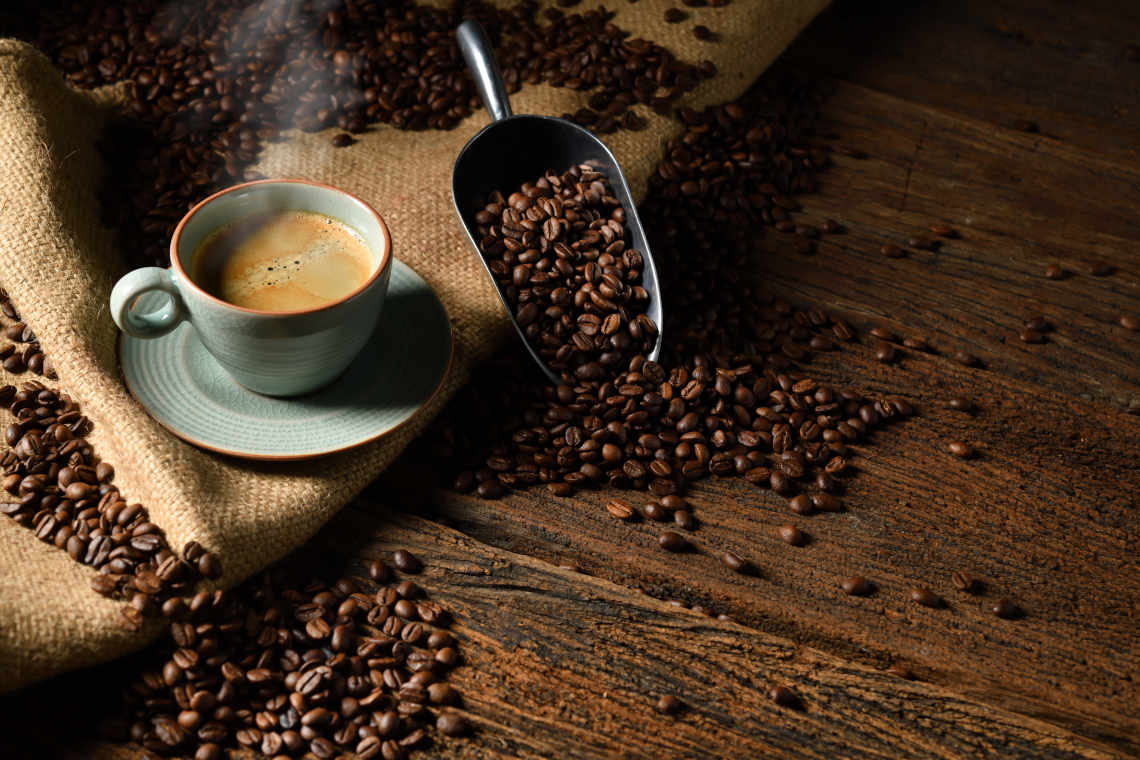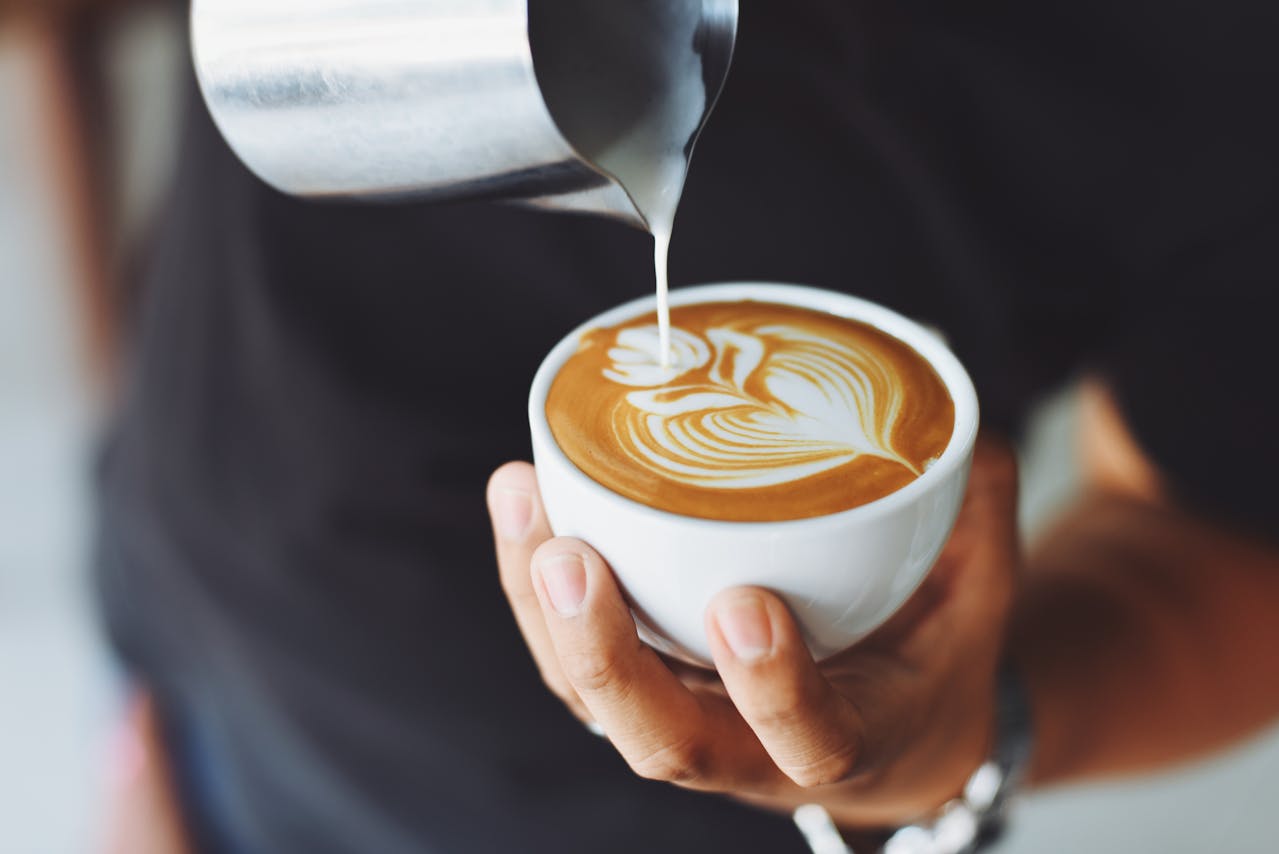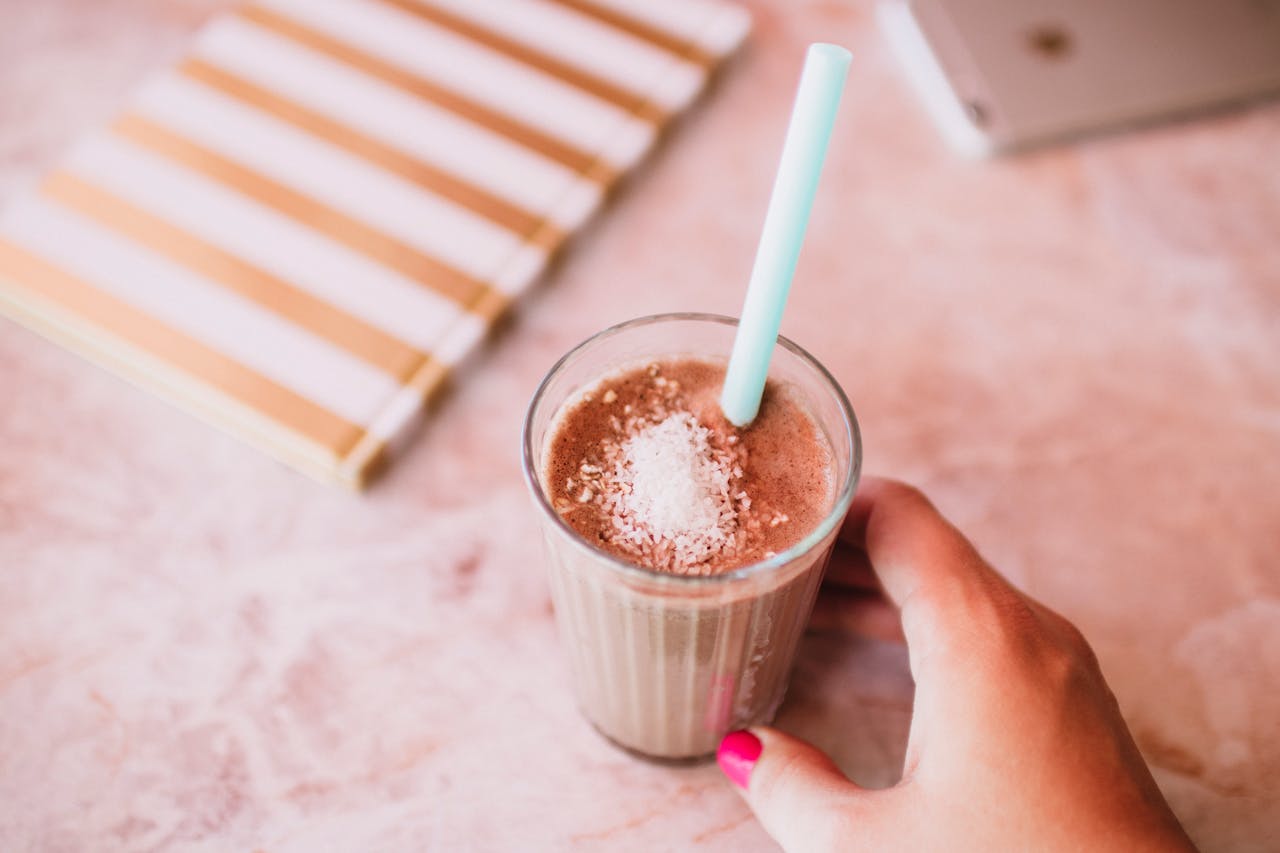การทดสอบรสชาติกาแฟ

ที่ SIS International การทดสอบรสชาติกาแฟเป็นมากกว่าการจิบและคัดเกรด มันเป็นกระบวนการที่ซับซ้อนที่ออกแบบมาเพื่อยกระดับแบรนด์กาแฟให้มีศักยภาพสูงสุด
ด้วยวิธีการทดสอบที่ครอบคลุมของเรา เราได้เจาะลึกประสบการณ์ทางประสาทสัมผัสของกาแฟ โดยประเมินทุกอย่างตั้งแต่กลิ่นหอมเริ่มต้นไปจนถึงรสชาติที่ค้างอยู่ในคอ การวิเคราะห์ที่เข้มงวดนี้ช่วยให้มั่นใจได้ว่าทุกแง่มุมของกาแฟตรงตามมาตรฐานคุณภาพและความสม่ำเสมอสูงสุด การทดสอบรสชาติกาแฟที่ SIS ระบุรสชาติที่ดีที่สุด และเปิดเผยเรื่องราวทั้งหมดเบื้องหลังเมล็ดกาแฟแต่ละชนิด ตั้งแต่ต้นกำเนิดจนถึงถ้วย
การทดสอบรสชาติกาแฟคืออะไร? ทำไมมันถึงสำคัญ?
Coffee taste testing isn’t some quaint ritual performed by bearded hipsters in flannel—it’s a merciless battleground where multimillion-dollar decisions live or die in the time it takes to slurp a tablespoon of liquid.
การทดสอบรสชาติกาแฟเป็นกระบวนการประเมินที่มีโครงสร้าง โดยจะมีการชิมกาแฟอย่างมีวิจารณญาณและประเมินเพื่อกำหนดคุณภาพ โปรไฟล์รสชาติ และคุณลักษณะเฉพาะ ประกอบด้วยขั้นตอนต่างๆ เพื่อประเมินรสชาติกาแฟแต่ละด้านอย่างเป็นระบบ
Real coffee taste testing—not the Instagram-friendly charade most consumers mistake for evaluation—demands three brutally different frameworks operating in concert:
- Consumer Panels: Raw, unfiltered feedback from everyday coffee drinkers who couldn’t care less about “notes of bergamot and blackberry jam” but know exactly what makes them reach for a second cup. These panels cut through industry pretension with ruthless efficiency.
- Expert Cuppings: Q-graders and certified professionals who’ve spent thousands of hours calibrating their sensory equipment to detect flaws and virtues invisible to untrained palates. They don’t care about your feelings—they care about molecular reality.
- Blind Comparative Analysis: The great equalizer where fancy packaging, origin stories, and price points vanish into thin air, leaving nothing but liquid quality exposed to ruthless, uncompromising judgment. Brands that dominate this arena earn their success; the rest are just marketing companies that happen to sell coffee.
It answers the “why” behind the “what.” Most coffee consumers can’t begin to articulate why they gravitate toward certain bags, but their limbic system knows exactly what it’s doing. Proper methodologies extract these hidden truths like a dentist pulls teeth: precisely, effectively, and sometimes with uncomfortable results.
… แต่การทดสอบรสชาติกาแฟมีประโยชน์อย่างไร?

การทดสอบรสชาติกาแฟมีข้อดีหลายประการสำหรับแบรนด์กาแฟ และต่อไปนี้คือคุณประโยชน์หลักบางประการที่ได้รับจากแบรนด์กาแฟ:
- การควบคุมคุณภาพขั้นสูง: Brands can maintain a high-quality standard across all their products.
- การพัฒนาผลิตภัณฑ์และนวัตกรรม: เป็นรากฐานสำหรับนวัตกรรม ช่วยให้แบรนด์ต่างๆ สามารถทดลองใช้ส่วนผสม วิธีการคั่ว และถั่วแบบใหม่ได้
- ตำแหน่งทางการตลาด: Effective taste testing enables brands to position themselves strategically.
- การอุทธรณ์ระดับโลก: This taste testing is essential for brands looking to reach an international audience.
- การตัดสินใจอย่างมีข้อมูล: ช่วยให้แบรนด์มีความรู้ในการตัดสินใจโดยใช้ข้อมูลรอบด้านเกี่ยวกับกลุ่มผลิตภัณฑ์ของตน การทำความเข้าใจว่ารสชาติใดโดนใจผู้บริโภค และเหตุใดจึงสามารถกำหนดกลยุทธ์การตลาด การพัฒนาผลิตภัณฑ์ และการตัดสินใจจัดหาวัตถุดิบได้
The Professional Coffee Taste Testing Protocol: 6 Critical Steps
The difference between casual sipping and professional coffee taste testing comes down to rigorous methodology. Here’s the six-step protocol that separates industry experts from amateur enthusiasts:
1. Sample Preparation
Professional coffee taste testing begins before the first sip. Samples must be:
- Ground precisely 15 minutes before evaluation (never pre-ground)
- Measured to exact coffee-to-water ratios (typically 8.25g per 150ml)
- Brewed with water at 200°F (±2°F)—never boiling
- Prepared in identical vessels free from residual odors
In serious coffee taste testing, even minor preparation inconsistencies can invalidate results. One specialty coffee importer discovered that a 3°F water temperature variation completely transformed how a particular Ethiopian bean’s floral notes were perceived during their coffee taste testing sessions.
2. Dry Fragrance Assessment
Before water ever touches the grounds, professional coffee taste testing evaluates the dry aromatics:
- Intensity (weak to strong)
- Complexity (simple to multifaceted)
- Character (fruity, floral, nutty, chocolatey, spiced)
- Defect detection (phenolic, ferment, musty)
This step provides crucial baseline data during coffee taste testing. Experienced evaluators can often predict flavor abnormalities from dry fragrance alone, flagging samples for special attention during later stages.
3. Wet Aroma Evaluation
The critical “break” (disrupting the crust that forms after brewing) releases volatile aromatics that provide essential information in coffee taste testing:
- First impressions (immediate aromatic burst)
- Evolution (how aromas transform as temperature decreases)
- Specific note identification using standardized terminology
- Structural components (sweetness indicators, acidity qualities, potential balance)
Many coffee professionals consider this the most revealing moment in coffee taste testing. Research shows aromatics detected during the break correlate strongly with overall quality scores, making this a powerful predictive tool.
4. Initial Taste Analysis
During structured coffee taste testing, the first sip focuses exclusively on immediate impact:
- Entry impression (first flavor sensation)
- Attack characteristics (how quickly flavors develop)
- Front-palate sensations (sweetness, initial acidity)
- Primary flavor clarity
Proper coffee taste testing requires aggressive slurping to aerosolize the liquid across all tasting zones simultaneously. This technique, while conspicuously loud, ensures complete sensory evaluation impossible with casual sipping.
5. Complete Flavor Profile Mapping
Now the comprehensive mapping begins. Professional coffee taste testing systematically evaluates:
- Sweetness (perceived sugar-like qualities without actual sugar)
- Acidity (type, quality, and intensity—not simply “high” or “low”)
- Body/mouthfeel (texture, weight, and coating properties)
- Flavor clarity and distinction
- Balance between components
- Complexity and layer development
- Finish characteristics and duration
Coffee taste testing at this stage employs standardized terminology to ensure consistency across evaluators. The Specialty Coffee Association’s flavor wheel has become the industry standard, with over 110 distinct descriptors arranged in hierarchical relationships.
6. Defect Identification and Scoring
The final phase of rigorous coffee taste testing involves:
- Technical defect identification (processing, storage, or roasting flaws)
- Intensity scoring of both positive attributes and defects
- Temperature-change evaluation (how flavor transforms as coffee cools)
- Overall quality scoring against established benchmarks
- Categorical placement (commercial, premium, specialty, or exceptional)
Professional coffee taste testing typically employs numerical scoring systems, with specialty coffee using the 100-point scale. Only coffees scoring above 80 points in blind coffee taste testing can be classified as specialty grade—a distinction with massive price implications for farmers and importers.
อุตสาหกรรมหลักในการทดสอบนี้
หลายอุตสาหกรรมได้รับประโยชน์จากการทดสอบรสชาติกาแฟ ได้แก่:
- การคั่วกาแฟ: เครื่องคั่วใช้การทดสอบรสชาติเพื่อรับรองคุณภาพและความสม่ำเสมอของเมล็ดกาแฟ
- ขายปลีกกาแฟ: ผู้ค้าปลีกใช้การทดสอบรสชาติเพื่อเลือกและแสดงเมล็ดกาแฟที่ดีที่สุดให้กับลูกค้า
- การต้อนรับขับสู้: โรงแรมและร้านอาหารใช้การทดสอบรสชาติเพื่อนำเสนอกาแฟคุณภาพสูงแก่แขก
- ร้านกาแฟ: ร้านกาแฟใช้การทดสอบรสชาติเพื่อพัฒนาเมนูกาแฟและมอบประสบการณ์ที่ไม่เหมือนใครให้กับลูกค้า
- แบรนด์กาแฟ: แบรนด์กาแฟใช้การทดสอบรสชาติเพื่อพัฒนาส่วนผสมและผลิตภัณฑ์ใหม่ๆ ที่ตอบสนองความต้องการของผู้บริโภค
เมื่อใดควรทำการทดสอบรสชาติกาแฟ

ก่อนที่จะดำเนินการทดสอบรสชาติกาแฟ จำเป็นต้องพิจารณาคำถามต่อไปนี้:
- ต้นกำเนิดถั่ว: เมล็ดกาแฟมาจากไหน และมีคุณภาพอย่างไร?
- โปรไฟล์การคั่ว: ลักษณะการคั่วของเมล็ดถั่วคืออะไร และส่งผลต่อรสชาติอย่างไร?
- วิธีการต้มเบียร์: จะใช้วิธีการต้มแบบใด และส่งผลต่อรสชาติอย่างไร?
- โปรโตคอลการชิม: เกณฑ์วิธีชิมคืออะไร และใครจะมีส่วนร่วมในการทดสอบรสชาติ
- วัตถุประสงค์: วัตถุประสงค์ของการทดสอบรสชาติคืออะไร และผลลัพธ์ที่ต้องการคืออะไร?
นั่นเป็นเหตุผลว่าทำไมการทดสอบรสชาติกาแฟจึงควรดำเนินการในขั้นตอนต่างๆ ของกระบวนการผลิตและการบริโภคกาแฟ ซึ่งรวมถึง:
- การเลือกถั่ว: ก่อนที่จะซื้อเมล็ดกาแฟในปริมาณมาก จำเป็นต้องทำการทดสอบรสชาติเพื่อให้แน่ใจว่าเมล็ดกาแฟมีคุณภาพได้มาตรฐานและสอดคล้องกับโปรไฟล์รสชาติที่ต้องการ
- ขั้นตอนการย่าง: ควรทำการทดสอบรสชาติในระหว่างกระบวนการคั่วเพื่อติดตามการพัฒนาของรสชาติและให้แน่ใจว่าถั่วคั่วอย่างสมบูรณ์แบบ
- กระบวนการต้มเบียร์: การทดสอบรสชาติสามารถทำได้ในระหว่างกระบวนการผลิตเบียร์เพื่อประเมินคุณภาพของกาแฟที่ชงและรับรองความสม่ำเสมอของรสชาติ
- การพัฒนาผลิตภัณฑ์: เมื่อพัฒนากาแฟผสมหรือผลิตภัณฑ์ใหม่ ควรทำการทดสอบรสชาติเพื่อรวบรวมความคิดเห็นและปรับปรุงข้อเสนอให้ตรงตามความต้องการของผู้บริโภค
- ควบคุมคุณภาพ: การทดสอบรสชาติเป็นประจำมีความสำคัญอย่างยิ่งต่อการรักษาคุณภาพและความสม่ำเสมอของผลิตภัณฑ์กาแฟ เพื่อให้มั่นใจว่าแต่ละชุดมีคุณสมบัติตรงตามมาตรฐานที่ต้องการ
- ผลตอบรับของผู้บริโภค: การทดสอบรสชาติสามารถดำเนินการเป็นระยะๆ เพื่อรวบรวมผลตอบรับจากผู้บริโภคและระบุด้านที่ต้องปรับปรุงในผลิตภัณฑ์กาแฟ
กลุ่มที่เติบโตมากที่สุดคืออะไร?
ส่วนการทดสอบรสชาติกาแฟที่เติบโตมากที่สุด ได้แก่:
- กาแฟจากแหล่งเดียว: ผู้บริโภคสนใจที่จะชิมกาแฟจากภูมิภาคต่างๆ มากขึ้นเพื่อสัมผัสรสชาติอันเป็นเอกลักษณ์ของภูมิภาคที่ปลูกกาแฟ
- การค้าขายตรงและกาแฟชนิดพิเศษ: ความต้องการที่เพิ่มขึ้นสำหรับกาแฟคุณภาพสูงจากแหล่งที่มีจริยธรรมผลักดันการเติบโตในตลาดการค้าทางตรงและตลาดกาแฟพิเศษ
- วิธีการต้มเบียร์ทางเลือก: ผู้บริโภคกำลังสำรวจวิธีการกลั่นเบียร์ทางเลือก เช่น การสกัดเย็น AeroPress และการเทเบียร์ ส่งผลให้มีความสนใจในการทดสอบรสชาติด้วยวิธีเหล่านี้มากขึ้น
- กาแฟผสมและกาแฟปรุงแต่ง: กาแฟผสมและกาแฟปรุงแต่งเป็นที่นิยมในหมู่ผู้บริโภคที่กำลังมองหาประสบการณ์กาแฟที่มีเอกลักษณ์และมีรสชาติ ซึ่งผลักดันการเติบโตของรสชาติในการทดสอบผลิตภัณฑ์เหล่านี้
Beyond Taste: The Multisensory Science of Modern Coffee Evaluation
Taste is merely one component—and often not even the most important one—in how you perceive coffee quality.
Advanced coffee taste testing doesn’t just measure flavor—it meticulously documents how all five senses create an integrated experience that your brain processes as a single perception of “good” or “bad.”
In ruthlessly controlled studies where participants heard different brewing sounds (from vintage percolators to high-end espresso machines) before tasting identical coffee, perception scores didn’t just shift slightly—they varied by a staggering 18%. Different brewing soundtrack, radically different perceived taste. The coffee hadn’t changed one molecule. The audio component had literally reprogrammed subjects’ taste expectations before the liquid ever touched their lips.
Researchers have mapped precise correlations between specific hue/clarity combinations and both perceived quality and actual chemical composition. One coffee titan discovered through painstaking spectrophotometric analysis during comprehensive coffee taste testing that a particular reddish-brown spectrum (specifically in the 720-680nm wavelength) predicted consumer preference for their signature blend with 83% accuracy—a finding that completely transformed their roast profile monitoring from subjective assessment to scientific precision.
The tactile dimension of coffee goes laughably beyond basic “body” assessment. State-of-the-art coffee taste testing now quantifies mouthfeel with the precision previously reserved for wine:
- Particularity (the perceived presence of suspended particles sized 0.1-1.0 microns)
- Astringency (measurable drying sensation mapped across 18 distinct palate regions)
- Richness (protein and lipid content perception quantified through comparative analysis)
- Mouthcoating persistence (using timed sensation decay mapping across multiple palate zones)
The most jaw-dropping revelation? Serving vessel weight affects quality perception so dramatically it makes coffee professionals question everything they thought they knew about taste. In methodically controlled coffee taste testing where researchers used visually identical but differently weighted cups (varying by mere ounces), participants didn’t just slightly prefer the coffee in heavier vessels—they rated it as fundamentally different and significantly “more premium” in every sensory category. Same exact coffee. Different cup weight. Completely different sensory experience. Several specialty cafes now select serviceware based on this coffee taste testing insight, choosing cups specifically weighted to enhance perception of their particular roast style.
โอกาส
การทดสอบรสชาติกาแฟนำเสนอโอกาสมากมายสำหรับธุรกิจในอุตสาหกรรมกาแฟ ต่อไปนี้เป็นการสำรวจโอกาสสำคัญที่การทดสอบรสชาติมอบให้:
- นวัตกรรมและการพัฒนาผลิตภัณฑ์: Coffee taste testing is a springboard for innovation, allowing businesses to experiment with new flavors, blends, and roasting techniques. This exploration can lead to the development of unique products that set a brand apart in a crowded marketplace. Companies can stay ahead of industry trends and meet evolving consumer demands by continuously engaging in taste testing.
- การประกันคุณภาพและความสม่ำเสมอ: การทดสอบรสชาติช่วยให้ธุรกิจสามารถรักษามาตรฐานความเป็นเลิศในระดับสูงสำหรับข้อเสนอทั้งหมดของตนได้ การประเมินคุณลักษณะทางประสาทสัมผัสของกาแฟเป็นประจำจะช่วยระบุความแปรผันหรือการเบี่ยงเบน ช่วยให้สามารถปรับคุณภาพได้ทันท่วงที
- ความผูกพันและความภักดีของลูกค้า: Engaging consumers in taste testing can foster a deeper connection with the brand. Inviting feedback and involving customers in product development can enhance their loyalty and create brand advocates.
- การขยายตลาดทั่วโลก: Taste testing is crucial for brands looking to expand into new markets. Different regions may have varied coffee taste, aroma, and strength preferences.
The Geographic Taste Illusion: How Origin Stories Hijack Your Perception
The industry’s religious devotion to origin stories persists despite mountains of coffee taste testing evidence suggesting it’s scientifically indefensible. In one particularly devastating study, master Q-graders (coffee’s equivalent of wine sommeliers) were given 12 single-origin coffees from 6 different continents in truly blind conditions. Their origin identification accuracy? A humiliating 32%—scarcely better than random guessing. Yet these same professionals speak with absolute certainty about “typical Kenyan profiles” and “characteristic Guatemalan notes” when they know where beans come from.
What coffee taste testing repeatedly confirms—and what industry insiders whisper about only after several drinks—is that processing method utterly dominates origin characteristics. When coffees from different continents undergo identical processing techniques, blind coffee taste testing participants group them together based on flavor profile rather than separating them by origin. Natural-processed coffees from Brazil, Ethiopia, and Colombia clustered together while washed coffees from those same countries formed a completely different grouping. The processing method created more flavor similarity than farms thousands of miles apart.
The premium pricing stranglehold certain origins maintain over others? It’s perpetuated despite coffee taste testing evidence suggesting it’s largely unjustified. One brave roaster conducted extensive blind testing where Brazilian coffees consistently outscored Ethiopian samples despite costing 30-40% less at wholesale. When they presented these coffee taste testing results at an industry conference, they were practically ostracized. The established narrative proved more powerful than objective data.
What’s even more devastating? In coffee taste testing with identical varietals grown in different countries but processed using identical methods, the cups score virtually the same when evaluated blind. A Gesha varietal from Panama might command $100+ per pound while the identical genetic variety grown in Honduras sells for $12—despite trained tasters being unable to reliably distinguish them in controlled coffee taste testing.
Ask yourself this uncomfortable question: If coffee from one country consistently fails to demonstrate distinctive, identifiable characteristics in blind coffee taste testing, why are you paying premium prices based primarily on that origin story? Your perception is being manipulated by narrative, not guided by what’s actually in the cup.
Key Takeaways: Coffee Taste Testing Insights
- Professional coffee taste testing follows a structured 6-step protocol analyzing dry fragrance, wet aroma, first impressions, complete flavor profile, and defect identification
- Controlled testing environments standardize water chemistry, atmospheric conditions, and serving vessels to eliminate variables that can skew results by up to 39%
- Water mineral composition affects flavor perception more than most inherent bean characteristics
- Multisensory evaluation including sound, color, and texture now complements traditional coffee taste testing methods
- Consumer preferences often diverge significantly from professional coffee taste testing scores
- Roast consistency predicts consumer satisfaction more reliably than exotic origins or processing methods
- The correlation between price and quality weakens considerably in high-end specialty coffee
- Just two hours of sensory training dramatically improves consumer ability to evaluate coffee objectively
SIS International ช่วยเหลือแบรนด์กาแฟอย่างไร
เอสไอเอส อินเตอร์เนชั่นแนล‘s coffee taste testing services offer a comprehensive approach to enhancing the quality and appeal of coffee products, providing businesses with several key benefits:
การประเมินคุณภาพ:
ซิส conducts rigorous taste testing protocols to assess the quality of coffee beans, ensuring that businesses select the best beans for their products.
โปรไฟล์รสชาติ:
นักชิมผู้เชี่ยวชาญของ SIS International จะให้รายละเอียดรสชาติของเมล็ดกาแฟชนิดต่างๆ ซึ่งช่วยให้ธุรกิจต่างๆ เข้าใจลักษณะเฉพาะและความแตกต่างอันเป็นเอกลักษณ์ของเมล็ดกาแฟแต่ละชนิด
ความสม่ำเสมอและการควบคุมคุณภาพ:
ด้วยการดำเนินการทดสอบรสชาติเป็นประจำ ทีมงานของเราช่วยให้ธุรกิจต่างๆ รักษาความสม่ำเสมอและคุณภาพของผลิตภัณฑ์กาแฟของตน เพื่อให้มั่นใจว่าแต่ละชุดมีคุณสมบัติตรงตามมาตรฐานที่ต้องการ
ข้อมูลเชิงลึกของผู้บริโภค:
SIS รวบรวมข้อมูลเชิงลึกอันมีค่าจากเซสชันการทดสอบรสชาติ ช่วยให้ธุรกิจต่างๆ มีความเข้าใจอย่างลึกซึ้งยิ่งขึ้นเกี่ยวกับความชอบและแนวโน้มของผู้บริโภคในตลาดกาแฟ
การพัฒนาผลิตภัณฑ์:
บริการทดสอบรสชาติของ SIS International ช่วยให้ธุรกิจต่างๆ พัฒนากาแฟผสมและผลิตภัณฑ์ใหม่ๆ ที่โดนใจกลุ่มเป้าหมาย ช่วยให้พวกเขารักษาความสามารถในการแข่งขันในตลาดได้
ความแตกต่างของตลาด:
ด้วยการนำเสนอผลิตภัณฑ์กาแฟคุณภาพสูงที่มีเอกลักษณ์และได้รับการพัฒนาผ่านการทดสอบรสชาติ ธุรกิจสามารถสร้างความแตกต่างและดึงดูดลูกค้าได้มากขึ้น
ลดค่าใช้จ่าย:
บริการของ SIS International ช่วยให้ธุรกิจหลีกเลี่ยงข้อผิดพลาดที่มีค่าใช้จ่ายสูงโดยการเลือกเมล็ดกาแฟและวิธีการชงกาแฟที่เหมาะสม ซึ่งช่วยประหยัดเวลาและทรัพยากร
การปรับปรุง ROI:
ด้วยการทดสอบรสชาติเชิงกลยุทธ์และการพัฒนาผลิตภัณฑ์ SIS International ช่วยให้ธุรกิจเพิ่ม ROI สูงสุดในตลาดกาแฟ
Frequently Asked Questions About Coffee Taste Testing
How many tasters are needed for a valid coffee taste testing panel?
Professional coffee taste testing typically requires 5-7 calibrated Q-graders for technical quality evaluation. For consumer preference studies, statistically valid results require minimum sample sizes of 100-150 participants. Qualitative exploration can yield valuable insights with focused panels of 8-12 participants per consumer segment.
How important is water quality in coffee taste testing?
Absolutely critical. Professional coffee taste testing uses precisely formulated water with controlled mineral content (typically 150ppm TDS with specific calcium/magnesium ratios). Water composition can transform flavor perception more dramatically than differences between bean origins. Even small variations in water chemistry can render comparative coffee taste testing results meaningless.
How do professionals prevent palate fatigue during coffee taste testing?
Rigorous coffee taste testing limits sessions to 6-8 samples maximum, with palate cleansers (usually plain crackers and room temperature water) between each. Samples are arranged strategically to prevent sensory adaptation, with potential palette-fatiguing coffees placed later in the sequence. Periodic breaks and strict avoidance of fragrance products or flavored foods before sessions are standard protocol.
What’s the difference between cupping and consumer coffee taste testing?
Cupping follows standardized SCA protocols to evaluate coffee’s intrinsic technical qualities, while consumer coffee taste testing assesses subjective preference and market potential. Comprehensive research programs use both: cupping to ensure quality fundamentals and consumer testing to validate market appeal. The approaches use different preparation methods, evaluation techniques, and scoring systems.
How does processing method influence coffee taste testing results?
Processing fundamentally determines flavor development potential. Natural (dry) processed coffees typically show fruitier, more fermented notes in coffee taste testing, while washed coffees present cleaner, more articulated acidity. Honey/pulped natural processes create intermediate profiles. Advanced coffee taste testing can typically identify processing methods with 90%+ accuracy based on flavor markers alone.
Can coffee taste testing predict commercial success?
When properly designed, taste testing can indeed predict market performance—with important caveats. The key is ensuring test participants properly represent target consumers and that testing contexts approximate real consumption environments. The most predictive metrics aren’t always overall preference scores but specific attributes like “purchase intent” and “uniqueness perception.”
How do cultural differences impact coffee taste testing?
Significantly! Different markets have distinct preparation preferences and flavor expectations. Northern European consumers typically prefer lighter roasts and higher acidity in coffee taste testing, while Southern European markets favor darker, more roast-dominant profiles. Asian markets often show greater sensitivity to subtle floral notes during blind coffee taste testing, while North American consumers typically respond more strongly to chocolate and nutty characteristics.
สถานที่ตั้งโรงงานของเราในนิวยอร์ก
11 E 22nd Street, ชั้น 2, นิวยอร์ก, NY 10010 T: +1(212) 505-6805
เกี่ยวกับ เอสไอเอส อินเตอร์เนชั่นแนล
เอสไอเอส อินเตอร์เนชั่นแนล เสนอการวิจัยเชิงปริมาณ เชิงคุณภาพ และเชิงกลยุทธ์ เราให้ข้อมูล เครื่องมือ กลยุทธ์ รายงาน และข้อมูลเชิงลึกเพื่อการตัดสินใจ นอกจากนี้เรายังดำเนินการสัมภาษณ์ การสำรวจ การสนทนากลุ่ม และวิธีการและแนวทางการวิจัยตลาดอื่นๆ ติดต่อเรา สำหรับโครงการวิจัยการตลาดครั้งต่อไปของคุณ


